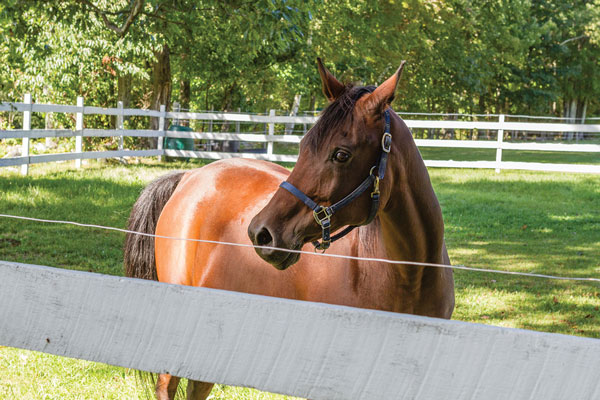Fitting the Fence to the Animal: Choosing the Best Electric Fence for Your Needs
Discover the most important considerations for selecting electric fencing for keeping your animals in, and hungry predators out.

The right voltage and the right type and number of wires on an electric fence can satisfactorily control poultry, sheep, goats, pigs, cattle, equines, rabbits, deer, foxes, coyotes, and bears. The trick is to get the right voltage and type and spacing of fence wires appropriate for the species.
When it comes to electric fence there are two types of animals: those that are easy to control with lower voltages, and those that require more juice on the wire to convince them that getting through the fence is a bad idea.
The first group includes cattle and horses, which generally have thin coats and are heavy enough to make solid ground contact. The second group comprises sheep and most wild animals, which tend to have heavier, more insulating coats, are lighter on their feet, and are more determined to get through a fence. In between are species like goats and pigs, which vary in ease of control depending on how docile they are and how well trained to the fence. Poultry fencing should focus on predator control, since everything likes to eat chicken.
Wiring recommendations for type, height, and spacing are based on whether a particular kind of animal generally prefers going under, over, or through a fence, and whether it has good eyesight. Bears, for example, have poor vision and may bumble through a fence before they see it’s there.

GENERAL PRINCIPLES
Here are a few things to bear in mind as you plan your fence system.
No electric fence is 100 percent effective 100 percent of the time. Where it is essential to have near-total reliability, such as along property lines or separating breeding stock, it’s better to build a combination physical and electric fence or a very solid physical fence.
Volts, amps, and pulse length all matter. Although the power recommendations below are given in voltage, it is also important to remember you need an energizer with sufficient power to fill your fence with amps to keep the pressure (volts) at the required level.
Find the right voltage range. Lastly, voltage recommendations vary quite a bit according to who is making them because they are based on experience and how cautious the recommender is — which varies by region and manufacturer. That said, most sources recommend a minimum of 4,000 volts for hard-to-control species, and a minimum of 2,000 volts for more docile animals. Anything greater than 8,000 volts is considered more than necessary (some sources say 6,000), and more likely to cause injury. Certainly many domestic animals will be controlled with much less than 3,000 volts; but if you’re just starting out and would rather be safe than sorry, start with these numbers. Other fenceline components (insulators, leadout cables) are designed for only 10,000 volts. If you push this limit you will find you are frequently replacing these items.
Seven Tips on Customizing a Fence for Your Animals
Here are some general pointers for fitting a fence to an animal.
- Top and bottom wires should always be charged to deter both jumpers and crawlers. If you use grounded wires, place them in the middle of the fence.
- The longer and thicker the hair or fur, the higher the voltage needed for the shock to jump all the way through to the skin and be convincing.
- The faster the animal and/or the poorer the eyesight, the more visible the fence should be. This is especially true for horses and bears.
- Taller fences for jumping animals, tighter fences for smaller animals. The exception here are the ones for deer, which are more easily confused by a three-dimensional electric fence than stopped by a 10-foot (3 m) high fence.
- Taller fences for teenaged animals. Young animals with lots of energy are far more likely to try jumping a fence than are mature adults. If you see a lot of this sort of youthful exuberance in your herd or flock, move the top wires higher, add top wires, or purchase taller electric net fencing.
- Humans often don’t notice or understand electric fences. If any of your electric fence borders public roads or walking, hiking, all-terrain vehicle, or snowmobile trails, then highly visible electric tape or twine is a good idea. Post “Warning! Electric Fence!” signs for added emphasis.
- “Rogue” animals should be culled. An animal that is always trying to jump over, wiggle through, or crawl under the fence, even though said critter has plenty to eat, can be a real waste of your time and energy, not to mention the wear and tear on your fence. Consider culling the animal before it teaches all the others its bad habits.
TEXT EXCERPTED FROM THE ELECTRIC FENCING HANDBOOK © ANN LARKIN HANSEN.











